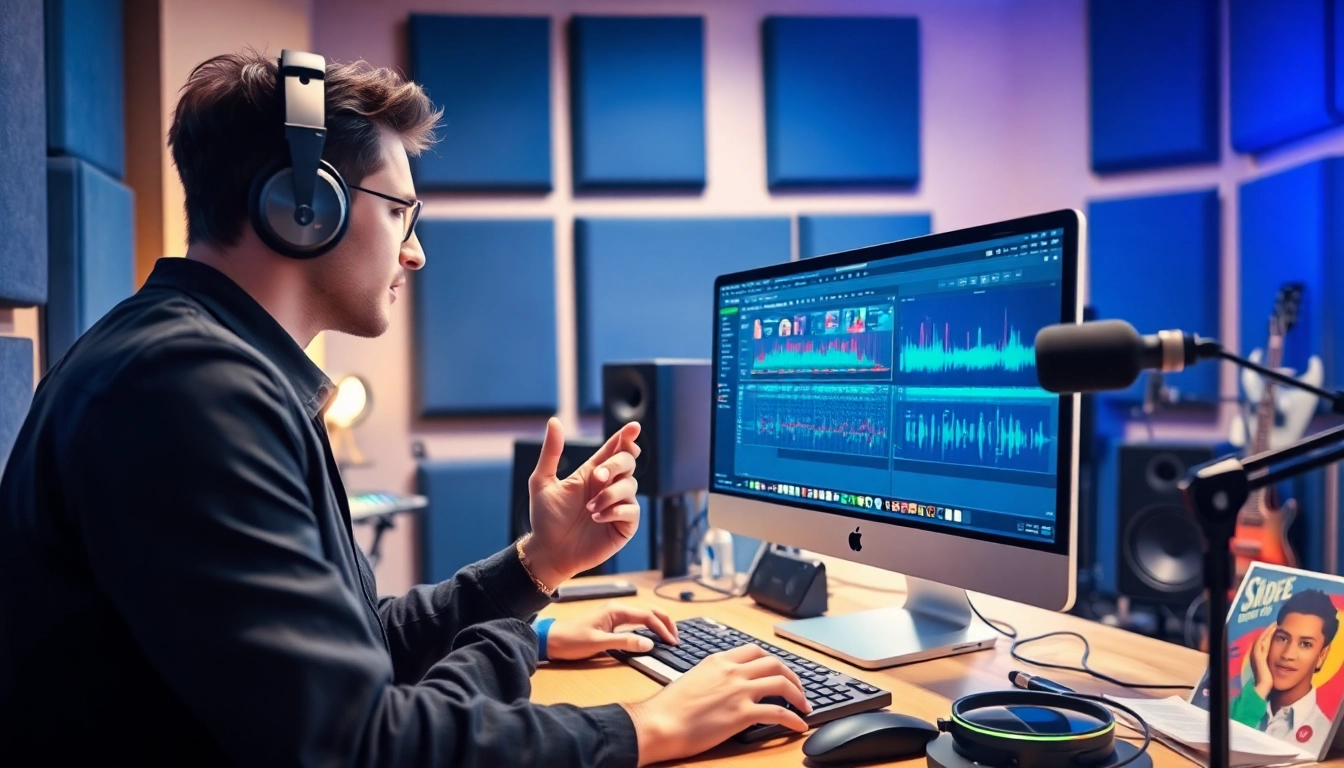Understanding the Streaming Landscape
The Rise of Streaming Platforms
In the past decade, music consumption has drastically transformed from physical formats and digital downloads to predominantly streaming platforms. This shift has reshaped the way artists distribute their music and connect with audiences globally. Streaming services like Spotify, Apple Music, and Tidal have become the go-to mediums for music lovers, offering unparalleled access to a vast library of songs at the touch of a button. By 2023, streaming accounted for over 80% of global music revenues, highlighting its dominance in the industry. The Streaming Success of artists now hinges heavily on leveraging these platforms effectively.
Trends Shaping Music Consumption
Various trends are influencing how music is consumed today. First, the growth of algorithm-driven playlists has made personalized music discovery easier than ever for listeners. Services like Spotify’s Discover Weekly curate a unique selection of songs tailored to each user, often exposing them to emerging artists. Second, the rise of user-generated content on platforms like TikTok and Instagram has revolutionized music promotion. Short, catchy clips can go viral, leading to increased streams for songs and helping artists reach new audiences. Lastly, data analytics are becoming integral to understanding listening behaviors, allowing artists to refine their approaches to content creation and marketing strategy.
Analyzing Your Target Audience
Understanding your audience is crucial for any successful artist. By examining demographics, listening habits, and geographical locations of your listeners, you can ensure that your music and marketing strategies align with their preferences. Tools like Spotify for Artists and Apple Music for Artists provide analytics that can help artists gain insights into who is listening to their music and how they engage with the content. Understanding your audience allows for targeted marketing efforts, smarter collaborations, and effective use of social media platforms, all of which contribute to your streaming success.
Building Your Brand as an Artist
Creating a Strong Online Presence
Your online presence is your digital storefront. A strong, cohesive brand message across various platforms enhances your visibility and helps cultivate an engaged audience. Start by ensuring your social media profiles are consistent in visuals and messaging. Update your artist bio with relevant information and keep your music catalog current on major streaming platforms. Visual identity matters, too—consider investing in professional photos and graphics that resonate with your music style. A solid website also acts as a hub for all your content, connecting fans to your music, upcoming shows, and merchandise.
The Role of Social Media in Promoting Music
Social media platforms are invaluable tools for music promotion. They allow artists to build relationships with their fans and cultivate a community around their music. By sharing behind-the-scenes content, engaging stories, or exclusive previews of upcoming releases, artists can maintain their followers’ interest. Campaigns that capitalize on current events or trending topics can significantly increase engagement. Furthermore, social media ads targeted toward specific demographics can reach potential listeners who may not yet be familiar with your work.
Collaborating with Other Artists
Collaboration can significantly amplify an artist’s reach. Partnering with other musicians allows you to tap into their fan base while also creating unique content that reflects a combination of styles. Whether through features on tracks, co-writing songs, or participating in joint performances, collaborations can bring new dimensions to your music. Additionally, cross-promotion on each other’s social media and streaming platforms can expand listenership, as fans often support collaborations between their favorite artists.
Optimizing Your Music for Streaming
Choosing the Right Distribution Services
Distribution is the bridge between artists and their audience. Selecting the right distribution service can significantly impact your streaming success. Popular platforms like DistroKid, TuneCore, and CD Baby each offer different pricing models and services. Analyze their features, such as royalty rates, ease of use, and additional marketing tools they provide. For instance, some services help pitch your songs to playlists, while others may offer promotional opportunities to enhance your visibility in a competitive market.
Creating Catchy and Engaging Content
Content is king in music streaming. From production quality to song length, every detail matters. Catchy hooks and engaging lyrics can make a track memorable, increasing the likelihood of shares and repeat listens. Additionally, consider developing other content forms such as music videos, lyric videos, or behind-the-scenes footage. The visual representation of your music adds layers to the listening experience, making it more enticing for fans. Investing time and resources in these creative aspects can pay off in higher streaming numbers.
Understanding Playlists and Their Impact
Playlists are a significant driving force behind streaming success. Being featured on popular playlists can expose your music to thousands of new listeners simultaneously. Research strategies for playlist placement, including submitting to curated playlists on Spotify and Apple Music. Additionally, consider creating your own playlists that include your songs along with tracks from other artists. This not only highlights your music but also fosters goodwill within the music community, potentially leading to reciprocal promotion.
Engagement and Interaction with Fans
Building a Community around Your Music
Building an engaged community around your music is key in today’s digital landscape. Activities such as Q&A sessions, contests, and live chats can enhance community interaction. Foster a welcoming environment by responding to comments and messages from fans, showing appreciation for their support. Engaging with your audience helps you humanize your brand, making listeners feel more connected to your music and motivating them to share it with others.
Utilizing Live Streaming and Virtual Events
The rise of live streaming has opened up new avenues for artists to connect with fans in real-time. Hosting virtual concerts or listening parties not only keeps your audience engaged but also creates unique experiences that encourage participation. Platforms like Twitch, Instagram Live, and YouTube Live provide options for artists to perform live, answer questions, and share exclusive content. These events can be monetized through ticket sales or donations while expanding your reach far beyond geographical constraints.
Encouraging Fan Participation
Encouraging fan participation can deepen their connection to your work. Consider running campaigns that invite fans to cover your songs, create fan art, or even contribute to an upcoming project. Share their contributions on your platforms, giving them a sense of recognition and involvement. Collaborative projects showcase the power of community in music, potentially leading to more organic growth and loyalty among your fan base.
Measuring and Adjusting Your Streaming Success
Tracking Key Performance Metrics
To achieve streaming success, it’s essential to track performance metrics. Metrics like stream counts, listener demographics, and engagement rates provide insights into what works and what doesn’t. Use tools provided by streaming platforms to monitor these statistics regularly, helping you adjust your strategies accordingly. Pay attention to trends—understanding peaks in traffic or shifts in listener behavior can help you refine your approach over time.
Leveraging Data for Continuous Improvement
Data isn’t just numbers; it’s a powerful tool for growth. By analyzing listener trends, you can identify which songs resonate most with your audience and why. Use this information to inform future music releases, marketing strategies, and content creation. For instance, if a particular genre or style garners more interest, consider incorporating those elements into your future projects to capitalize on that success.
Adapting to Changes in Music Trends
The music industry is constantly evolving, influenced by cultural shifts, emerging technologies, and changing listener preferences. Staying adaptable and informed about these changes is crucial for long-term success. Subscribe to music industry newsletters, follow industry leaders on social media, and participate in forums relevant to your genre. Being proactive enables you to pivot your strategies according to market demands, ensuring that your music remains relevant and resonates with your audience.



